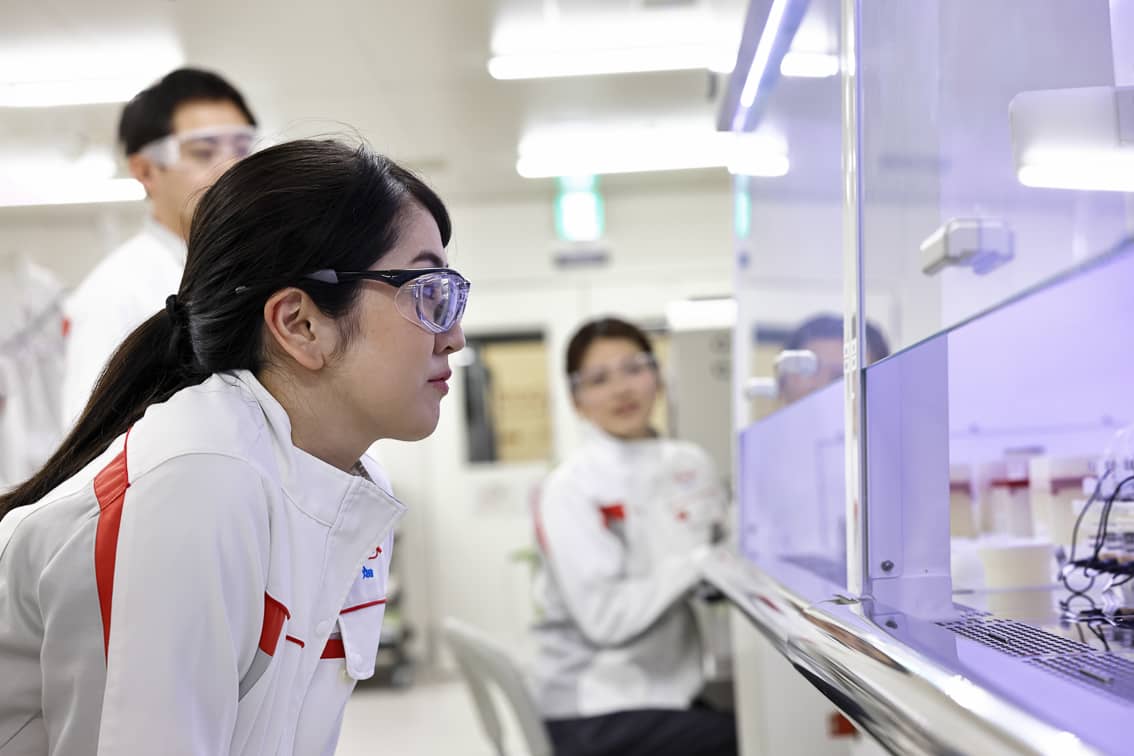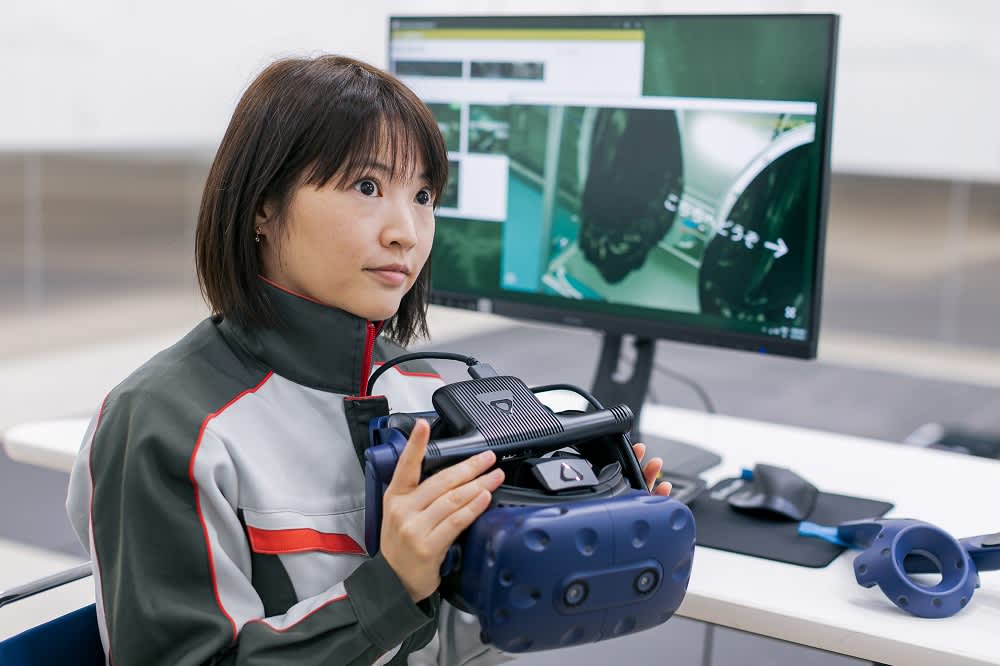How we create value | Takeda 2025 Annual Integrated Report

How we create value
“Getting medicines to patients faster by building up our own internal capabilities and using the power of data and digital – this is a great example of what sustainability means to us.”
Creating a digital pipeline, bringing better medicines to patients faster
Digital technology is transforming health care – from smart packaging in clinical trials to using AI to speed up diagnoses and monitor disease in real time. Across Takeda, we’re using new data and digital technologies, including AI, to transform our operations, advance research and improve health outcomes for patients.
For the past three years, we’ve been creating a digital pipeline to go alongside our R&D pipeline. We’re seeing more and more uses for AI in processing clinical trial data, for example, and identifying new efficiencies in our manufacturing.
We’re investing in AI partnerships, using more real-world data and developing apps, using AI and predictive analysis to improve patient care and engagement. We’re also developing and scaling up new digital solutions, as well as using AI to predict maintenance needs and optimize our manufacturing processes.
What are the potential benefits of data and digital?
Research and development
- Shorten cycle times for drug development
- Help improve the design of our clinical trials
- Provide more accurate insights into research
Manufacturing and supply
- Increase productivity and speed up key processes
- Reduce potential downtime and optimize our management of inventories
Outreach to patients and health care professionals
- Help patients manage their conditions, especially those with chronic diseases
- Increase engagement with both patients and health care professionals

Technology starts with our people. Our Digital Dexterity program equips employees with essential data, digital and technology skills. And, by offering new learning opportunities – from Everyday AI to more specialized programs – both our technical and non-technical teams will be able to use digital effortlessly and thrive in a digital-first environment.
- With the rise of digital technologies, more real-world data is available. That’s useful in the design of clinical trials, where basic patient data may be missing. For example, we used real-world data in recent trials for a drug to combat AATD-LD*, a rare liver disease. It took just four months to assemble the right data – less than half the usual time, allowing us to start trials much sooner.
- For clinical trials, we’re developing smart packaging, automatically recording when patients open and take their medicines. Pilots in the U.S. and China have shown that using smart packaging provides more accurate data, and reduces reliance on patients’ diaries. New smart packaging will be available for all Takeda clinical trials from 2025.
Breaking down the barriers to health care
We want as many people as possible to benefit from our medicines and vaccines. With health care systems in many countries under strain, that’s not always possible. That’s why we’re working with governments and non-governmental organizations (NGOs) to train new health workers, improve diagnosis and raise standards of clinical care, including in Low- and Middle-Income countries (LMICs).
In many LMICs, average spending on health care is much lower than in higher-income countries. Added to that are growing populations, climate change, and a rise in non-communicable illnesses like cancer and heart disease. All these factors threaten to overwhelm health care systems in many resource-constrained countries across Asia, Africa and Latin America.
Around the world, we also donate to NGO programs to expand health services in LMICs. Our Global CSR Program provides long-term funding – because we recognize that, with health care systems, there are simply no quick fixes.
Since the start of our Global CSR Program in 2016, we’ve committed approximately USD 200 million to programs covering everything from tackling neglected tropical diseases to extending health care to those living in remote, hard-to-get-to areas.
Rolling out our dengue fever vaccine
In recent years, dengue fever cases have been rising sharply. One of the main reasons for this is climate change – rising temperatures and changing rainfall patterns are creating favorable conditions for the mosquitoes that spread the disease. Since 2022, we’ve been working with governments, manufacturers and NGOs to increase supplies of our QDENGA® vaccine, protecting millions of people across Asia and Latin America.
In 2024, the World Health Organization (WHO) reported 14.3 million cases of dengue fever worldwide. The majority of these cases – over 13 million – were reported in Latin America. The actual number could be significantly higher, as many instances of dengue go either unreported or misdiagnosed. Dengue fever can put significant strain on local hospitals and health care systems.
Our vaccine, QDENGA®, was first approved for use more than two years ago – it’s now available in 29 countries worldwide. The vaccine has proved effective against all four strains of dengue and is the first vaccine approved for use in individuals, regardless of whether they’ve been previously infected. To meet growing demand, we’re ramping up production of QDENGA®. By 2030, we aim to produce 100 million doses annually.
We’re working closely with national governments to ensure our vaccine reaches the people who need it. In doing so, we prioritize countries most affected by the disease. QDENGA® has also been added to the WHO’s List of Prequalified Vaccines – that’s important because it means the vaccine can be procured by UN agencies like UNICEF, the PAHO and GAVI, the global vaccine alliance.
Sign up for our investors newsletter
Stay up to date on financial results, corporate milestones and learn how we're delivering on our commitment to patients, our people and the planet.
Sign up
